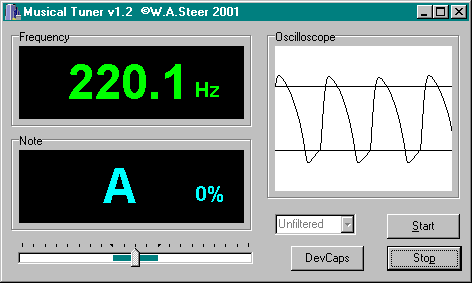Theremin World,
I always find it fascinating how much "work" is put into this instrument to be in pitch, tone, or finding your middle C. So... Here's something I did with my Theremin when I was showing a fellow artists the instrument. I stuck the Guitar Tuner to the Theremin-stand and waved my hands in the air. Looked down at the tuner and noted the amp was then guiding me to what was in note value being produced.
This seemed to work till I realized how annoying it is to keep looking down. However, my friend thought it was a cool instrument with & without the tuner too. And it seemed to produce an easy 'hunt' and 'hold' tone values to keep a note value.
I began to wonder why, and not taking the hours of work professionals have devout to this instrument, not install a tuner imbedded on a Theremin case which operates and takes its energy from the main power source? Or is this too Theremini? I'm saying, simply, a B3 Theremin or EWS with the top of the case imbedded with a tuner. Possibly with on/off features so you (the player) can not be held by the added guidance of a tuner per performance.
Any thoughts or simple reasons or additions would be interesting for me to read.
V/R
RePO



 Christopher
Christopher